Rachel C. Lightfoot's Blog, page 3
August 2, 2016
Back from Hiatus
June 3, 2016
Ireland 2016, update 3
Too tired to do a proper vlog update. Please accept this picture of me in Listoghil at Carrowmore instead. I’ll attempt to do a proper vlog post of our Yeats adventures tomorrow, after we push on into Northern Ireland.
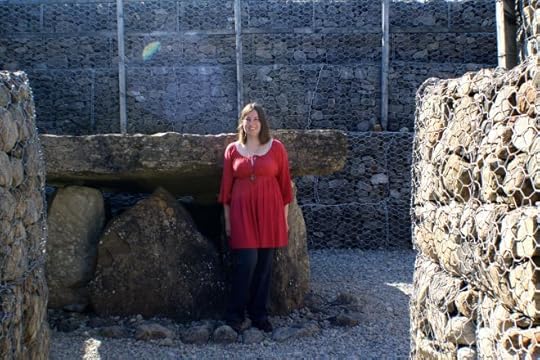


June 2, 2016
Ireland Travel Vlog, update 2
Ireland Travel Vlog, update 1
May 4, 2016
Illness and Trip Excitement
It always seems like the best thought out plans are the quickest to derail.
As I’d mentioned in previous posts, it was my intent to post a new update every Tuesday and Thursday until the end of May, then switch to brief daily updates while overseas. However, April hit me hard – first with a family emergency, then with mind-fogging sickness. Writing became impossible, and researching for updates completely out of the question.
I’m finally starting to get back on my feet, but last minute travel plans have me preoccupied. 26 days – I honestly can’t believe it’s so close!
Hopefully, I’ll have a chance to write and queue more posts before then, but in the meantime, I’m going to keep resting and finalizing those last minute things that keep popping up. I found out today I will have my laptop – versus my mom’s – with me during the trip though, which means I’ll most likely be vlogging rather than writing about our adventure.
Best wishes,
R.C. Lightfoot
᚛ᚇᚏᚗᚇ᚜


April 26, 2016
Cahir Castle
Situated on a rocky island in county Tipperary, Cahir Castle is among Ireland’s largest and best preserved castles.
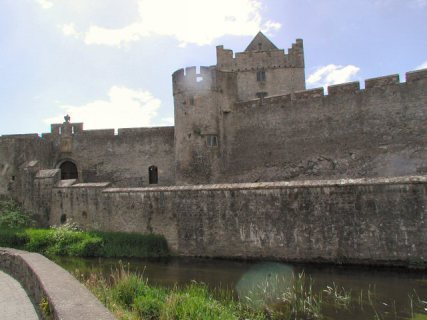
Image Credit: Irish Castles
First built in 1142 by Conor O’Brien, the castle replaced an earlier earthen fort that stood on the same site. Ownership of Cahir passed to the Butler family in the 13th century, who proceeded to expand and strengthen its defenses through the 15th century. The castle was captured three times over the course of its history, sometimes without a single shot fired.
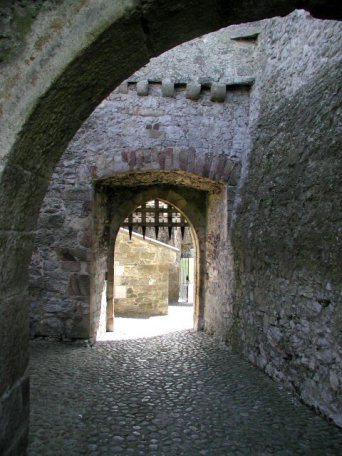
Image Credit: Irish Castles
Upon the last lord’s death in 1961, Cahir Castle became property of the Irish State. Multiple restorations have taken place since then, with an effort to remain faithful to the castle’s original design.
To celebrate the 100th anniversary of the 1916 Easter Rising, Cahir Castle also currently houses an exhibit over the Rising and War of Independence. The exhibit will remain in the castle’s great hall until September 30th.
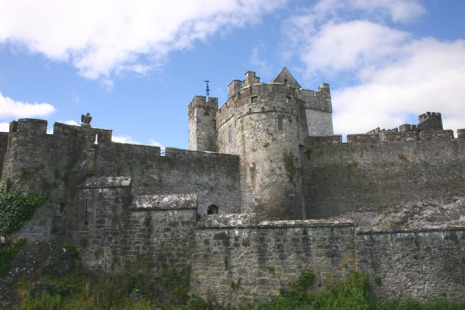
Image Credit: Wikipedia
The castle has varying operating hours during the year. From March to mid-June, the site is open from 9:30 am to 5:30 pm. Hours are extended from mid-June to August, with visitors welcome from 9:00 am to 6:30 pm. Without a Heritage Card, admission is 4 euro per adult, 3 euro for seniors and 2 euro for children. Guided tours are available, but must be booked in advance.
It’s also worth noting, the site only takes cash – no credit or debit cards will be accepted – so plan accordingly.
Additional Links & Resources:
Heritage Ireland: Cahir Castle


April 23, 2016
“But I can’t read tally marks!” – Fun with Ogham
As a warning, this blog post will veer slightly from my usual style, focusing more on personal experience rather than sights or folklore. I’ll return to talking about those things on Tuesday, but for this extra weekend update, I’d like to talk about an ancient alphabet, Ogham.

From The Book of Ballymote. Image Credit: Omniglot
Ogham (pronounced “AHG-m” or “OH-ehm”) is also known as the Celtic Tree Alphabet, as each of its original 20 letters were associated with a given tree held sacred by the druids. An additional aicme, or group of five letters, was added later as the script transitioned from stone and wooden property markers to use in manuscripts and texts. It can be written vertically or horizontally, depending on its medium, but follows the same structure.
Writing begins with an eite (feather, ᚛) and ends with an eite thuathail (reverse feather, ᚜). These two characters are connected by a solid line, around which letters are formed. The original four aicmi consist of lines drawn above, below, diagonally through, or straight through this central line. Letters within a given aicme differ merely in the number of lines present, as shown below.
The fifth aicme represents special letter combinations and is more complex than its predecessors, holding to no pattern from one character to the next.
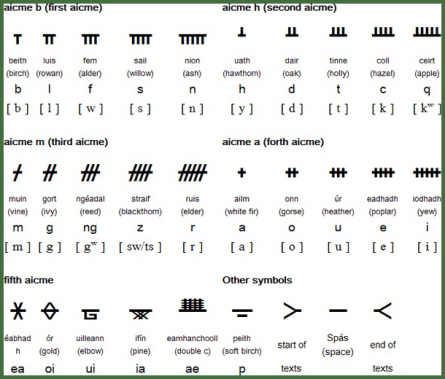
Ogham’s 25 characters with Latin alphabet equivalents. Dots are occasionally used in place of lines in the fourth aicme. Image Credit: Omniglot.
The oldest remaining stone carvings easily date to the 4th century, and the script endured for centuries – The Book of Ballymote, written in the 10th century, is one of the last Irish manuscripts to include Ogham. However, it’s possible the alphabet is even older, with some characteristics suggesting it originated as early as the 1st century.
Multiple theories exist to explain Ogham’s origins, ranging from speculation it was used to send cryptic messages in Old Irish to the possibility of an old sign language among druids before its commitment to paper. But when the script’s namesake is even debated, it’s unlikely we will ever truly know how the alphabet came into being.

Churchclara Ogham Stone in County Kilkenny. Image Credit: Megalithic Ireland.
I’ve made note of Ogham stones near sites I’ll visit in June, and have considered going out of my way to see one or two of them. And like most things that guide my travel plans, Ogham holds a deeper personal interest for me than would be expected, mainly because my friends and I decided to incorporate it into our fantasy roleplays.
Fairly early on in our campaigns, we realized we needed a stand-in writing system for an ancient language one of our characters speaks, as the party stumbles upon runes multiple times. As these characters are all from our respective novels and storylines, it made sense to root our runes in a culture – Irish – that inspired multiple world elements. And so Ogham became our stand in script, ready to leave our characters scratching their heads for a while.
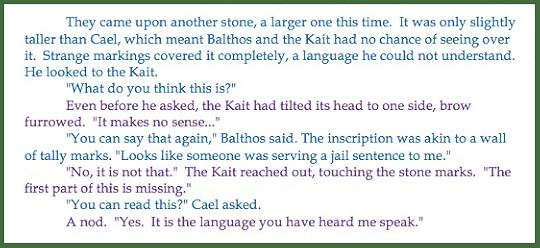
Roleplay excerpt. Balthos and Cael belong to Sarah Parris, the Kait belongs to me.
But we also began using Ogham away from our stories, mainly to joke around on campus. We’d write innocent things – character names, answers to questions, little notes – on notice boards in the dorms, leaving no clues to help the next person puzzle out what the lines meant.
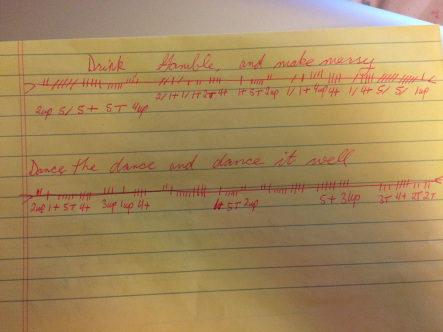
A cheat sheet from one of our message board replies, Fall 2015.
We kept our identities secret, too, only leaving our messages when no one else was around, even if it meant sneaking around at four in the morning to scrawl a few lines.
I continued leaving messages even after my friends graduated (especially when Sarah would visit for weekend dorm sleepovers), but finally gave up the ruse around graduation – I used Ogham to decorate my cap.

Each side contains a single word, to represent a different part of me. Some had to be tweaked to fit the small space, but I hold them close all the same. Starting from the bottom, going clockwise:
Eolai. Gaelic for scientist, derived from knowledge. I dedicated three and a half years to studying biology and chemistry, and hope to dedicate many more to medicine in the years to come. I can’t be me without accepting I am a scientist.
Druid. My nickname. Even though I’m a science major, I’m fascinated by the fae and mythical qualities of the world around me and strive to bring them both into balance with each other.
Bard. For my love of crafting stories. Without my writing, I feel incomplete. I need something to balance out the methodical, sometimes cold logic science requires, something that allows me to breathe free. Writing accomplishes that.
Cara. Gaelic for friend. A title I hope I’m worthy of accepting from those closest to me.

I still sign letters as Druid in Ogham, occasionally writing notes or song lyrics along the sheet’s perimeter in the ancient script. It’s a small, silly thing, but something my friends and I can easily recognize, even if it might take a while to write and read.
Has anyone else played around with Ogham or another ancient script? I’d love to hear about it!
Additional Links & Resources:
Ancient History Encyclopedia: Ogham
Megalithic Ireland: Ogham Stones


April 21, 2016
Carrowmore – Megalithic Cemetary of the West
Carrowmore, located just outside of Sligo, is Ireland’s largest megalithic cemetery. Some controversy surrounds how old the tombs at the site truly are, with dates ranging between 5,400 BC and 3,500 BC, but it’s widely believed Carrowmore predates Newgrange by at least 700 years.
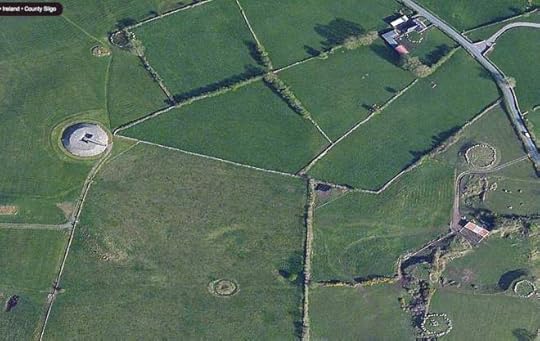
Arial view of the complex. Image Credit: Bing Maps, via Carrowkeel.
Each of the many dolmens, passage tombs, and stone circles are identified by number rather than by name, just as they have been since 1837. However, some of the tombs are “missing” – of the 60 originally described, only 30 have survived years of stone quarrying and general disruption. These remaining tombs are almost all partial examples, but generally would have displayed short passages with small inner chambers.
Even though these megaliths are referred to as tombs, almost none contain interred bodies. Instead, archeologists have found signs of cremated remains along with small material possessions commonly found in other Irish tombs.
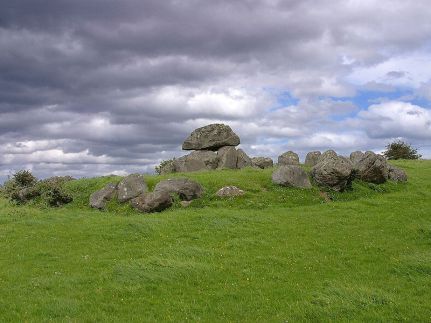
Tomb 7. Image Credit: Wikipedia.
Tomb 51 is the largest and most complete, sitting at the complex’s highest point. Known as Listoghil, it’s the only tomb still covered by a cairn and measures slightly over 111 feet (33 m) in diameter. Some restoration has been performed, including the addition of a public viewing platform of the cairn’s inner chamber. From Listoghil, it’s also possible to see Queen Maeve’s cairn on nearby Knocknarea.
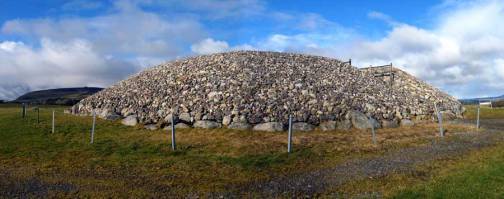
Listoghil. Image Credit: Carrowkeel.
The site is open to the public March 24th thru October 20th from 10:00 am to 6:oo pm. Without a Heritage Card, admission to Carrowmore is 4 euro per adult, 3 euro for seniors and 2 euro for children. Guided tours are available upon request.
Additional Links & Resources:
The Golden Book: Ireland, page 96
Ireland Legends & Folklore, pages 198-201


April 19, 2016
Sligo – Following Yeats’ Poems, 127 Years Later
For my upcoming trip to Ireland, Sligo is higher on my “must visit” list than Dublin, and for one semi-nerdy reason: I love Yeats’ poem The Stolen Child.
I first heard the poem in high school after stumbling upon Loreena McKennitt’s work. Several months passed before I realized the words were actually penned by Yeats in 1886, and that each stanza references real sights in an around Sligo.
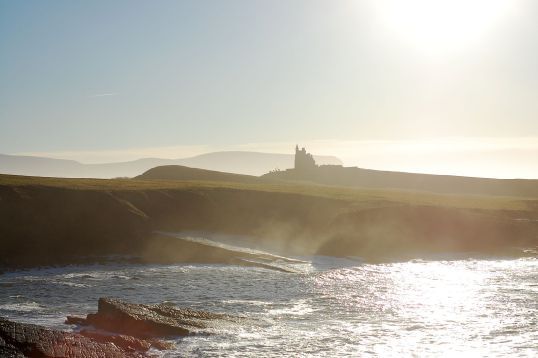
Sligo Coastline. Image Credit: Wikipedia.
From that moment on, I was entranced. I chose The Stolen Child for a classroom poetry analysis exercise, and I’d later find inspiration from its refrain for a short story that evolved into my first novel.
When I went to Ireland with my family in 2011, our tour group didn’t stop in Sligo. It came as a disappointment, but I’d already decided at that point I’d find a way back to Ireland and explore Sligo at my own pace, letting my favorite poem lead me.
Where dips the rocky highland / Of Sleuth Wood in the lake…
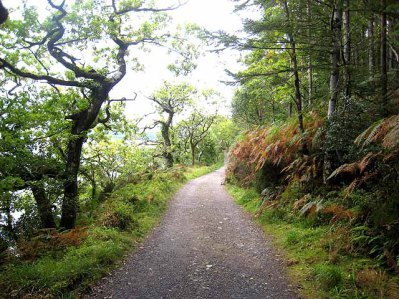
Slish Wood Trail. Image Credit: Wikipedia.
Though Yeats called it Sleuth Wood in his poem, the hilly forest along Lough Gill is actually named Slish Wood. Once entirely an oak forest, the area was cleared during World War II. Some pockets of 250 year old oaks remain, and the region is regarded as a biodiversity site and is included in Lough Gill Natural Heritage Area. A strenuous walking trail allows visitors to follow the lake shore and take in the local wildlife, with two paths available. The shortest loops back to the car park at the trail head and spans 1.86 miles (3 km).
Far off by furthest Rosses / We foot it all the night…
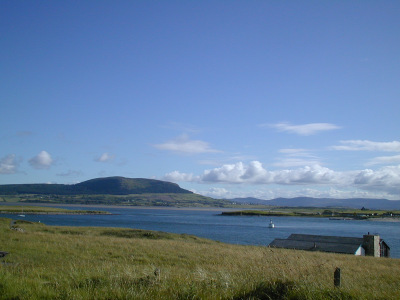
View at Rosses Point. Image Credit: Wikipedia.
Rosses Point is one of Sligo’s two beaches, lining Sligo harbor. Yeats and his brother spent their summers here, and with views of mountains Benbulben and Knocknarea, it’s no wonder the Point made it into The Stolen Child. As with Slish Wood, there’s a walking trail that winds around the Point. This one’s slightly shorter – only 1.8 miles (2.9 km).
.
“Where the wandering water gushes / From the hills above Glen-Car…”
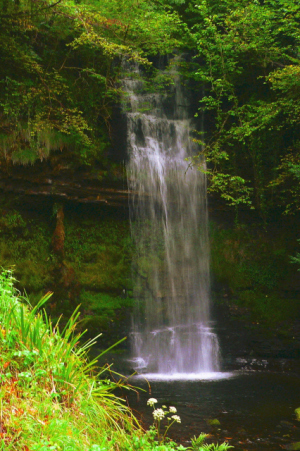
Glencar Waterfall. Image Credit: Wikipedia.
Glencar Lough straddles counties Sligo and Leitrim, and is actually home to several waterfalls, most of which are visible from the road. But the largest, and the one featured in the poem, requires a bit more walking – around half a mile (less than 1 km) on a paved trail. This main waterfall descends 50 feet to a pool below, sending white spray into the air as it strikes against rocky earth on the way down.
There’s certainly more I want to see while in Sligo than these three nature trails. Carrowmore, a megalithic cemetery that rivals Newgrange in size, is one such place – expect more information in Thursday’s blog post!
Additional Links & Resources:
Leitrim Tourism: Glencar Waterfall


April 14, 2016
A brief interlude
Due to a family emergency, I was unable to prepare a normal blog post for today. I still have every intention of writing the post I had planned, but due to said emergency, haven’t the energy to spare for it in this moment.
I’ll be taking a few days to recollect my thoughts, and should be back on schedule next week (with perhaps an extra update to make up for this lost day).
Thanks for understanding,
~RC Lightfoot











